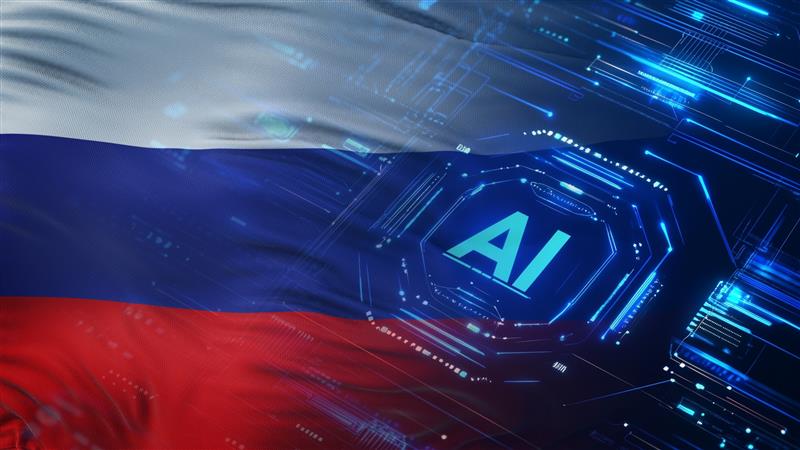
In the pace of wars, the capability of artificial intelligence in Russia for military and civilian purposes is growing, drawing on lessons learned on the battlefield in Ukraine, and international cooperation with China to advance command systems, drones, cyber operations, and air defenses.
Moscow stresses on artificial intelligence in Russia, as a strategic priority. However, challenges exist, and results are determined by technology in Russia sanctions, talent shortages, and ideological constraints. The Kremlin’s effort aim to modernize military operations, enhance surveillance and targeting, and compete on a global level with digital leaders; US and China.
Digital Transformation vs Russian Military
The Russian AI plan goes back to the 1960s Soviet “science city” of Zelenograd, where the nation started to experiment early with neural networks and automated systems to support anti-missile and air defense technology. Russian naval cruise missiles like the P-700 Granit employed proto-AI in targeting sea and land targets.
The aftermath of the fall of the Soviet Union, Russian technology development lagged but gained momentum after the 2014 annexation of Crimea and escalating tensions with the west.
In 2019, Russia took a step towards legalizing its AI ambitions with the National Strategy on the Development of Artificial Intelligence (NAIS) to 20230, with a vision of gaining significant market share globally. Military applications were outlined in 2021 as fire control systems, air and missile defense, robotics, electronic warfare, and training simulators.
The invasion of Ukraine in 2022 marked the first war where artificial intelligence in Russia played a major role. Russian forces were confronted by strong Western AI systems like the US systems from Maven and Palantir, that let Ukraine decode and counter Russian operations in real-time. In response, the focus went on Russia AI development through command networks, like the Pantsir S-1, S-300, S-400, and S-350 Vityaz.
Intelligence was also applied in AI-guided drones Ukraine-Russia, allowing swarm deployments feasible with real-time task allocation.
In August 2023, Russian Ministry of Defence (MoD) overseed more than 500 AI projects. Flagship entities include Military Technopolis “Era,” JSC Ruselectronics – largest Russian manufacturer of radio electronic technologies-, and United Aircraft Corporation, all working on AI Russian military drones research and application.
Analysts note that Russia’s hands-on battlefield experience, is a likely “revolution in military affairs” providing unmatched real-world data for future technology in Russia development.
Russia AI Strategy and Global Ambitions
Despite the Putin AI investment, technological and human resource constraints stand as obstacles. Western-imposed sanctions have stopped high-end semiconductors and GPUs, limiting high-performance computing for AI. On the other side, attempts at Chinese, Indian, and Kazakh imports have been partially successful.
What affected the situation also is around 100, 000 IT professionals that left Russia after escalating tensions, affecting the local Russian weapons hybrid warfare capabilities. To rise from this use, the Kremlin created the Artificial Intelligence Development Center, tasked with coordinating AI projects across government, regions, and businesses, repeating proven solutions, and organizing international cooperation.
“Our task is to make those results accessible to all Russians and to make our country more competitive in world markets through the development of modern technologies,” Deputy Prime Minister Dmitry Grigorenko said.
Ideological constraints further complicate the situation. Past President Dmitry Medvedev went after Yandex’s Alice voice assistant for refusing to respond to politically sensitive questions, demonstrating the pressure on AI drone in Russia to conform to Kremlin narratives.
Simultaneously, Putin has emphasized AI must cover every corner of Russian life, framing leadership in Putin AI as a national calling to strengthen his country’s position amid escalating tensions.
To overcome limitations, global partnerships are the way to escape. Russia collaborates with China in the development of AI, explores cooperation with authoritarian states like Venezuela and even North Korea, and continues combat testing in Ukraine.
Russian experts are aware of the technology disadvantage against the US and China, but look to experience in direct battles, concentrated resource control, and strategic partnerships as ways to accelerate Russia AI weapons development.
Will Electronic Warfare Russia Surpass Major Powers?
AI initiatives driven by Russia, from the past till now guided by the imperatives of war, sanctions, and global competition, are a strategic push to change the modernization of armed forces and gain power over technology.
Amid unlimited challenges, growing artificial intelligence in Russia capabilities, back by real-time battlefield efforts and strategic collaborations, can really impact army dynamics and combat situations. The focus on Russia’s AI power is a proof of Moscow’s goal to bridge the technological gap with major global rivals, especially the US.
Inside Telecom provides you with an extensive list of content covering all aspects of the tech industry. Keep an eye on our Intelligent Tech sections to stay informed and up-to-date with our daily articles.